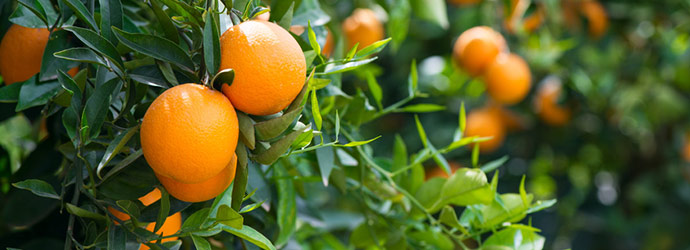Citrus trees are subtropical plants that can survive temperatures of twenty-eight degrees for short period and can be one of the best trees to grow in the arid southwest. Since many of the commercial growers extend from Southern California to Phoenix, and the surrounding areas have been growing citrus here for over one hundred years, the durability of these trees has been proven. Citrus can be pruned anytime of the year but the bark of the tree can sustain damage if they are pruned and not protected during high heat or heavy frost. This damage can be seen as a pealing or splitting of the bark. If this does occur, the tree may be damaged and some of the structure may die back.
Suckers, or the rapid growing branches that appear below the graft, should be removed whenever they are present. These suckers deplete the main body of the tree from vital nutrients and can cause the tree to decline.
Citrus should be watered on a scheduled basis, with deep watering approximately every ten days. Fertilization should occur in late February or early March. This first period fertilizer helps promote new growth and blossom development. The second application should be applied in late May. This application helps maintain growth. Follow with a light application in August and the final fertilization being in late October or early November.
Citrus require fifteen elements for good growth, three of these elements are provided from water and air, and the other elements are taken from soil or fertilizer. Citrus fertilizer should contain all the trace elements such as iron, phosphorus, potassium, calcium, magnesium, sulfur, boron, manganese, zinc, copper, molybdenum, chlorine, and sodium. In the southwest region, our soils contain many of these elements so, supplemental fertilization may need to be specialized for these areas. Don’t be afraid to prune, just be aware of the sun and frost conditions that may affect your citrus.





